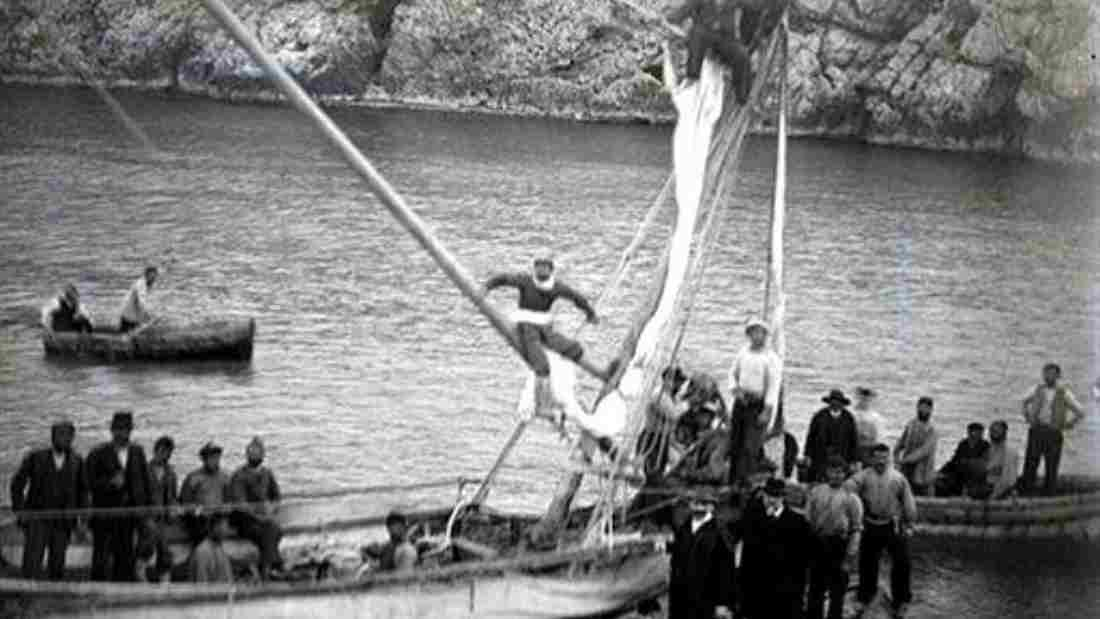The Antikythera Wreck, or Ναυάγιο των Αντικυθήρων in Greek, is a shipwreck from the Roman era that occurred in the second quarter of the first century BC.
An accidental, and momentous, discovery
The Antikythera was found in 1900 off the Greek island of Antikythera by a sponge diver from Greece named Elias Stadiatis.
Initially the captain of the ship, Dimitrios Kondos did not believe Stadiatis, assuming that the diver’s senses had been hampered by the nitrogen in his breathing mixture. So he dove in himself, emerging a short while later holding an arm from a bronze statue.
By the middle of 1901, Kondos and his crew brought up a variety of artefacts from the shipwreck, including 36 marble sculptures (representing, among others, Hercules, Ulysses, Diomedes, and Apollo), a bronze statue known as “The Philosopher,” a bronze lyre, pieces of glasswork, and three marble horse statues.
Also found in the shipwreck was the rusting remains of the Antikythera mechanism, which many believe to be the first known analogue computer.
These priceless items are presently kept at the National Archaeological Museum of Athens along with the Antikythera mechanism.
Kondos and the divers stopped diving down to the ship after one diver passed away and two others became paralyzed from decompression sickness.
New efforts to explore the wreck in the second half of the Twentieth Century
The wreck lay abandoned until 1953, when renowned explorer Jacques-Yves Cousteau visited the site.
23 years later, Cousteau made a second trip and collaborated with archaeologists to find approximately 300 more items. To uncover objects that had previously been hidden from view, they dug a portion of the ship. These featured more marble and bronze statues, ceramic jars, bronze and silver coins, jewellery, and hull boards. Assorted human bones from at least four distinct people were also found during Cousteau’s 1976 voyage.
The National Archaeological Museum of Athens now has these antique artefacts, pieces of artwork, and ship parts on exhibit.
Improved technology in the Twenty-First Century makes even more underwater excavation possible
The wreck was abandoned once more for nearly 40 years before Brendan Foley, a marine archaeologist with the Woods Hole Oceanographic Institute (WHOI), who is now at Lund University in Sweden, obtained authorization from the Greek government in 2012 to conduct a thorough diving survey of the wreckage site.
For their study, Foley’s team used mixed-gas closed-circuit rebreather technology, which allowed divers to spend more time below each day—much longer than during earlier excursions.
Additionally, the “Iron Man for underwater science” Exosuit allowed divers to drop to 1,000 feet (nearly 300 meters) and stay underwater for several hours without the need to decompress when they came back to the surface.
Just a few hundred meters south of the Antikythera wreck, his team also discovered a second ancient shipwreck. They also recovered massive marble head of a bearded male figure thought to be a portion of a statue of Hercules, human teeth, a marble plinth with the lower legs of another statue, and several equipment components from the cargo ship.


